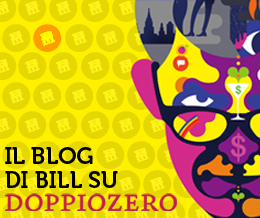Questa rivista è dedicata a William "Bill" Bernbach.
La sua visione della pubblicità - civile, mai banale, basata sulla verità - appare sempre più attuale.
Benvenuti e buona visione.
Occupy Wall Street is above all about occupying media space usually reserved for media companies and political parties. The revolt against the “dictatorship of finance” came to public attention in a few days and rapidly spread across the United States. 15th October “United for Global Change” event has infected more than 80 countries worldwide.
Occupy is especially interesting for its involving and creative use of language and communication strategies. In terms of advertising, Occupy is more creative than big American corporations and perhaps even than its predecessors – those Spanish Indignados and American Tea Party it stole the show from. Its communication strategy was not improvised. Occupy Wall Street is an advertising school case study. It is not a coincidence that it was launched from the pages of Adbusters (2011 September issue).
Adbusters is a two-monthly magazine founded in 1989 in Vancouver, an online community, and a foundation. Its name rings a loud bell among cultural agitators. Mark Dery defines Adbusters people as “Billboard bandits, pirate TV and radio broadcasters, media hoaxers, and other vernacular media wrenchers who intrude on the intruders, investing ads, newscasts, and other media artifacts with subversive meanings”.
Adbusters’s claim, chosen by founder Kalle Lasn, is “journal of mental environment”. A carnival of interference to root out advertising from citizens heads, reverse political and social dynamics while reaching successful communication. Among their campaigns, there are Buy Nothing Day, Digital Detox Week, and True Cost Economics (for a more environmentally friendly economic system). And, of course, Occupy Wall Street.
They speak the language of advertising. Which is successful when you’ve got a good insight.
Language is the mirror of Occupy Wall Street soul. It’s as varied as its members, and as the public it addresses: “We are a free global network made up of artists, activists, writers, pranksters, students, educators and entrepreneurs who want to advance the new social activist movement of the information age with the aim to topple existing power structures and forge a major shift in the way we will live in the 21st century. [...] We intend to force every day consumer culture to bite its tail. [...] If we could say that we wanted to facilitate a wider range of movement of people who decided not to undergo the productivist and consumerist conformism”. From the ’90s to today, from theory to Zuccotti Park. The scenario has not changed much.
What has changed it’s the awareness with which these people use media and words. Occupywallst.org broadcasts live from the streets. When newscasts kindly offer them a bunch of seconds, they use short catchy messages. A few symbols, a handful of words which you feel in your guts and hit your head with their strength. Easy to remember. Easy to repeat, if you want.
They are as effective as beautiful print ads headlines, as the best copyads. The street becomes the subject of the protest. It reminds me of Arab Spring as described by Italian journalist Domenico Quirico: “Everybody holds a placard and asks for a pen or a piece of paper to write down a claim”.
Occupy Wall Street people are creative and skilled strategists. They know very well their target – finance men and institutions. They talk to their enemy and are understood from everyone else. Their “We are the 99%” claim uses numbers against those who usually hides behind numbers. Their message is powerful. So it keeps spreading. Word of mouth is effective when is substantial.
The language of rebellion and the language of advertising share several rules.
No taxation without representation. Black power. Just do it. These are all examples of successful communication. The words are already there, they just wait for someone to use them. Meaningful words make the difference, as in revolts as in advertising.
Andrea Masciullo is copywriter at Tita.



